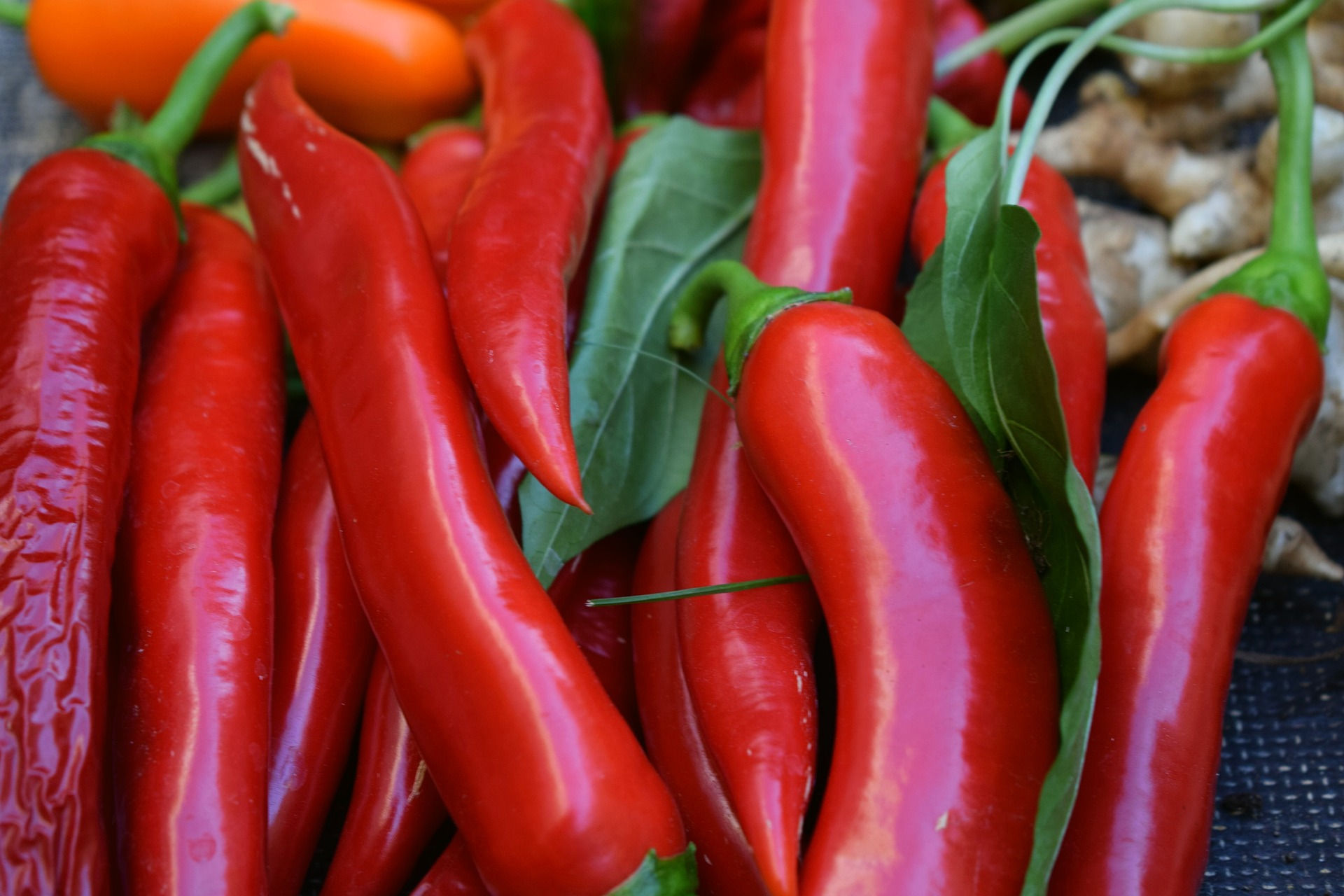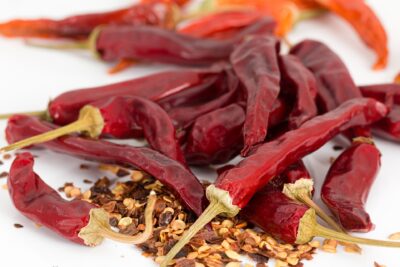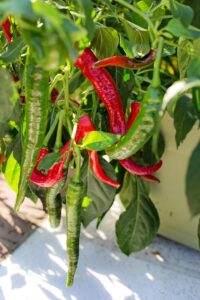Cayenne Promotes Weight Loss and Improves Digestion

Cayenne (Capsicum annuum) pepper is a medicinal herb beloved for its intense flavor and healing effects on the body. The fruit of the Cayenne plant contains capsaicin, the compound responsible for Cayenne pepper’s spicy heat and health benefits. On the Scoville Rating Scale, cayenne pepper is rated between 30,000 to 190,000 Scoville Heat Units (SHU); pure capsaicin has the highest SHU rating. Cayenne promotes weight loss, improves digestion, lowers blood sugar levels, fights inflammation, and supports heart health. To top it off, Cayenne is great for the immune system thanks to a host of vitamins. NutraTea herbalists formulated the tea blend NutraTrim with Cayenne in order to support weight management, stimulate metabolic rate and removal of toxins, and control blood sugar levels and cravings.
Cayenne contains:
- Provitamin A carotenoids
- Antioxidants
- Vitamin C
- Vitamin K
- Vitamin B6
- Potassium
- Magnesium
Cayenne Promotes Weight Loss and Improves Digestion
Capsaicin in Cayenne activates receptors in the stomach and intestines. This increases blood flow and promotes the secretion of saliva and stomach acids, which metabolize food and toxins. This heightened enzyme activity helps improve the digestion of proteins, fats, and carbohydrates. Additionally, capsaicin can accelerate peristalsis, the wave-like muscle contractions that move food through the digestive tract, which can help reduce bloating and constipation. Also, capsaicin may boost metabolism and help burn more calories, supporting weight loss. Over time, regular consumption of cayenne pepper may also contribute to a healthier gut microbiome, further supporting digestive health and healthy weight loss. NutraTrim is an ideal tea blend for anyone with digestive issues and a desire to reach and maintain a healthy weight.
Cayenne Lowers Blood Sugar
Cayenne’s rockstar ingredient, capsaicin, can enhance insulin sensitivity by promoting the uptake of glucose into cells, which helps regulate blood sugar more effectively. It also stimulates the release of adiponectin, a hormone that improves insulin sensitivity and promotes the breakdown of fats. Capsaicin may increase the expression of certain genes involved in glucose metabolism, supporting the body’s ability to process and store glucose more efficiently. Inflammation and oxidative stress are linked to insulin resistance and impaired blood sugar control; capsaicin’s antioxidants help prevent such damage. By improving glucose metabolism, cayenne pepper can help lower the risk of developing type 2 diabetes. NutraTrim tea contains Cayenne and other herbs that help improve glucose metabolism.
Cayenne for Cardiovascular Health
Capsaicin promotes vasodilation, the process by which blood vessels relax and widen, which improves circulation and lowers blood pressure. It does this by stimulating the release of nitric oxide, a molecule that dilates blood vessels, reducing the workload on the heart. Additionally, capsaicin has antioxidant and anti-inflammatory properties that reduce oxidative stress and inflammation, both of which are major contributors to heart disease. Capsaicin can help lower cholesterol levels by increasing the breakdown of fats and improving lipid profiles. It may also enhance blood circulation by improving endothelial function, which supports the proper function of blood vessels. Finally, cayenne pepper may reduce the risk of blood clot formation by preventing platelet aggregation, a process known as fibrinolysis. Over time, these combined effects can help lower the risk of conditions like hypertension, atherosclerosis, and heart attacks.
More About Cayenne
Cayenne is a variety of the Capsicum annum species, which also includes jalapeños and bell peppers. It’s a member of the Solanaceae or nightshade family. Its name is rooted in the Greek word “kapto,” meaning “to bite” or “to seize,” a reference to the intensely spicy sensation the pepper induces. “Annuum” refers to the plant’s annual growth cycle. Cayenne originated in Central and South America and now grows in subtropical and tropical climates. The pepper is a long, hollow pod that turns red, yellow, or orange as it ripens.




